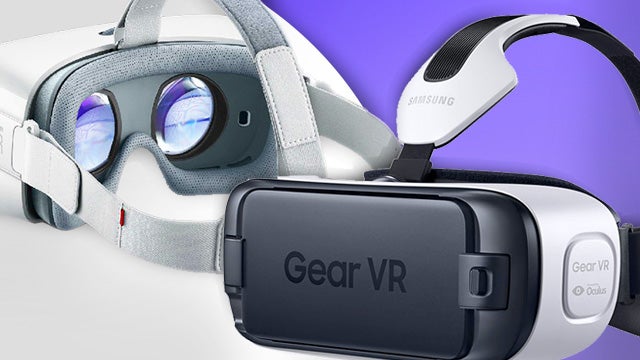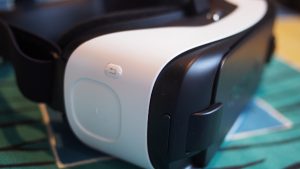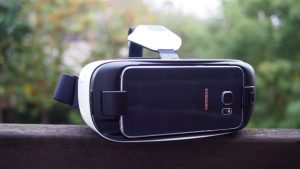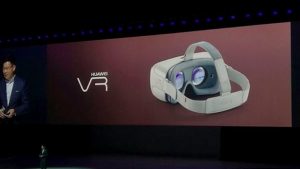Huawei VR vs Samsung Gear VR

The newly announced Huawei VR is set to take on the Samsung Gear VR in the mobile virtual reality market. But how do these two headsets compare?
As expected, Huawei has joined an increasingly crowded virtual reality scene with the announcement of the Huawei VR, which looks a lot like the Samsung Gear VR.
So how do these two mobile phone-powered VR headsets stack up?
We’ve reviewed the Gear VR, of course, but so far precious little is known about the Huawei VR. Still, here’s an initial comparison based on what we do know.
Check out the TrustedReviews guide to VR:
Similar design
Early hands-on reports of the Huawei VR from China, where it was announced, seem to confirm what our eyes are telling us. It looks a lot like the Gear VR.
From its slick visor look to the location and nature of its controls (a touchpad and back button on the right side, and a focus ring on the top), it’s all looking familiar.
Huawei is clearly attempting to match and emulate its South Korean rival here on the design front. Which is no bad thing.
Related: What is virtual reality?

Very different display solutions
The way these two VR headsets handle displaying VR content is actually quite different.
Whereas the Samsung Gear VR relies on you slotting in your recent Galaxy phone (Galaxy S7, Galaxy S7 Edge, Galaxy Note 5, Galaxy S6, or Galaxy S6 Edge) and directly utilising its display, the Huawei VR has its very own dedicated screen. You still need to plug in a phone (at present the Huawei P9, Huawei P9 Plus, or Mate 8), using a USB Type-C connection, but the handset will simply act as the engine for the VR experience.
It’s a shame the dedicated display seems to be such a low-res affair, though. We’re looking at a 1080p (1,920 x 1,080) screen resolution, whereas all of the compatible Samsung phones output at 2K (2,560 x 1,440).
On the plus side however, the Huawei VR display features an anti-blue light filter to help protect your eyes.
The field of view is very similar between the two, with 95-degrees for the Huawei and 96-degrees for the Samsung.
Related: 9 virtual realty experiences everyone should try

It seems as if you won’t be able to wear your prescription glasses with the Huawei VR, but it does sport adjustable lenses to compensate.
Those with myopia as low as -7.00 will be catered for here, so it could actually be a good option for anyone with poor eyesight.
360 sound
If the Huawei appears to lose out a little on the visual experience, it looks set to make up for it on the audio side.
Huawei claims that its headset is the first to offer a 360-degree sound field. You’ll need to provide the cans, but if you do you’ll get truly immersive sound to complement the 360-degree imagery.
Free content
Huawei says the Huawei VR will ship with a generous amount of free media content. This will include 4,000 movies, though we presume those can’t all be true VR experiences.
In addition, you’ll get 40 free games, 350 panoramic images, and 150 panoramic tours.
It’s a generous offering, at least on the surface, and one that Samsung’s VR headset can’t hope to match in terms of sheer numbers. However, the all-important quality of this free content is yet to be ascertained.
Related: Best VR Headset 2016

China only?
Regardless of how well the Huawei VR compares to the Samsung VR in the final reckoning, it could be a moot point. It’s quite possible that the Huawei VR will be a China-only release.
Huawei chose the P9 and P9 Plus smartphone launch event in China to announce its debut VR effort, rather than the earlier UK-based launch. This seems to suggest that it’s focusing on its home market – at least initially.
BUY NOW: Gear VR at Amazon.co.uk from £84

Samsung, by contrast, has launched its Samsung VR headset into the US, European, and South Korean markets.
As similar as they may be then, it seems quite possible that these two VR rivals will never meet.
Early verdict
It’s simply impossible to draw any meaningful conclusions from Huawei’s VR announcement in terms of a comparison with the Gear VR. It was too light on details for that.
We don’t know how expensive the Huawei VR will be, where it will launch, what kind of content it will run, or how that content will look on its dedicated low-res display.
By comparison, the Samsung VR is on the market, well priced, and most importantly it has a solid library of content. A proper comparison will have to wait, but for now Samsung will be sitting comfortably in its virtual seat.
(apester:56d572cb36e5105a3a2f2e42)
Will you be buying a VR headset this year? Let us know in the comments below.


